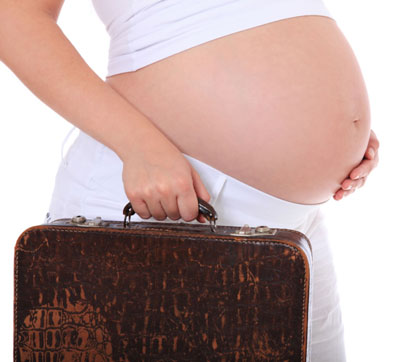Most mothers-to-be eagerly await that first reassuring flutter, just to know their baby is growing and developing. Every pregnant woman should learn how to count her foetus’ movements. Sometime between 18-25 weeks into pregnancy, moms will begin to feel movement. For first-time moms, it may occur closer to 25 weeks, and for second or third-time moms, it may occur closer to 18 weeks.
COUNTING KICKS IS IMPORTANT

For a couple of weeks it may be difficult to distinguish between gas and the real thing, but very soon, you will notice a pattern. You will feel your baby stretch, kick, roll and turn every day. Some babies are more active than others. All babies have periods of sleep during which they are not as active. You will get to know your baby’s pattern of movements and when your baby is most active.
Being attentive to your baby’s movements will help you notice any significant changes. Setting aside time every day when you know your baby is active to count kicks, swishes, rolls, and jabs may help identify potential problems and can help prevent stillbirth. Though strongly recommended for high-risk pregnancies, counting foetal movements beginning at 28 weeks may be beneficial for all pregnancies.
WHEN TO DO THE KICK COUNT?
Try to schedule the kick count during your baby’s most active time of day, but also a time when you will be able to record movements over three or four hours, if needed. You will need to record movements starting from about the same time each day.
Generally, moms find their babies are most active after eating a meal or something sweet, drinking something very cold, or after physical activity. You may also find your baby to be more active between 9:00 pm and 1:00 am, as your blood sugar level is declining.
Taking time to do your kick counts will encourage you to rest and bond with your baby. Start by finding a comfortable position during a time when your baby is usually most active. Some moms prefer sitting in a well-supported position with their arms holding their bellies. Other moms prefer lying on their left sides, which they find most comfortable and most effective for monitoring their babies. Lying on your left side also allows for the best circulation which could lead to a more active baby.
COUNTING YOUR BABY’S MOVEMENTS
The American Congress of Obstetricians and Gynaecologists recommends that you time how long it takes you to feel 10 kicks, flutters, swishes, or rolls. Ideally, you want to feel at least 10 movements within two hours. You will likely feel 10 movements in less time than that.
You might want to start a notebook. In the notebook, record the time you feel the first foetal movement, place a check mark for each movement you feel until you reach 10, then record the time of the tenth movement. This will help you observe patterns and discover how long it normally takes for your baby to move 10 times. Keep in mind you are looking for significant deviations from the pattern.
Example for recording your kick counts
Week 28
- Monday 9:00 XXXXXXXXXX 9:32 Total: 32 min
- Tuesday 12:00 XXXXXXXXXX 12:45 Total: 45 min
- Wednesday 9:00 XXXXXXXXXX 10:00 Total: 1 hr.
- Thursday 9:00 XXXXXXXXXX 11:15 Total: 2 hrs. 15 min.
It can become easy to expect an exact amount of time every time you do your kick counts; however, there can be a wide range of time differences. So remember to look for significant deviations from the pattern over the course of a few days.
WHEN SHOULD I CALL MY DOCTOR OR MIDWIFE?
- If you have followed the above recommendations and have not felt 10 kicks by the end of the second hour, wait a few hours and try again. If after trying a second time, you do not feel 10 movements within 2 hours, then you should go to the hospital for the medical staff to perform a foetal monitoring.
- If you notice a significant deviation from the pattern over the course of 3-4 days.




